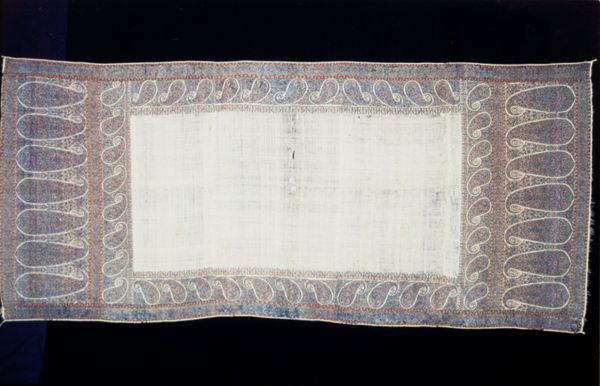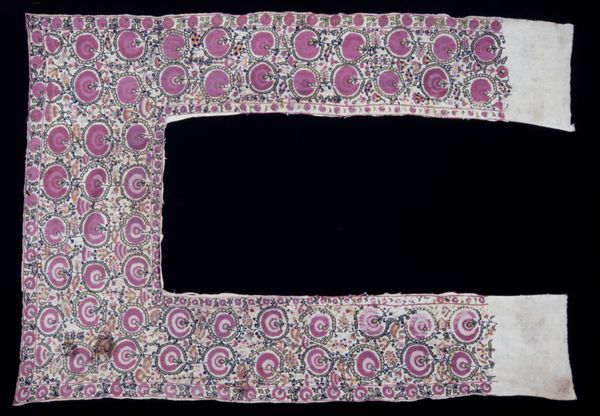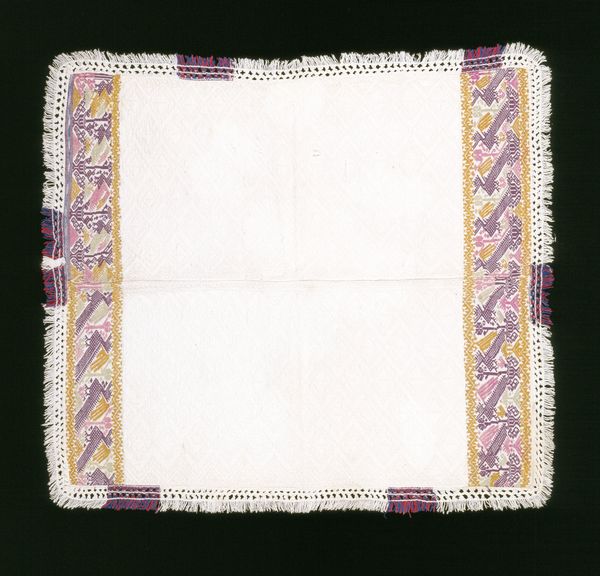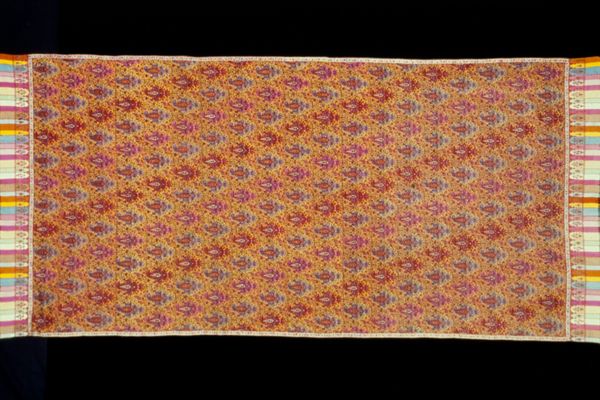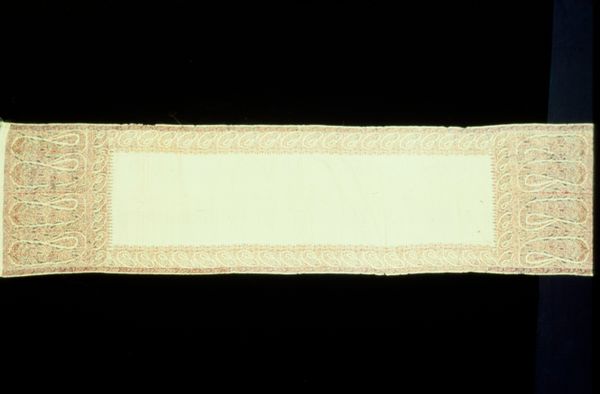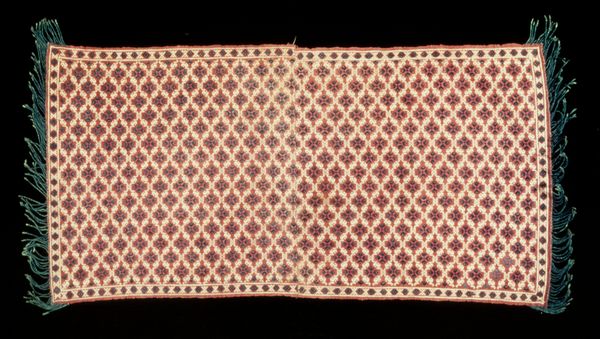
silk, weaving, textile, wool
#
silk
#
pattern
#
weaving
#
textile
#
wool
#
geometric pattern
#
geometric
#
orientalism
#
pattern repetition
Copyright: Public Domain
Curator: At the Minneapolis Institute of Art, we have on display an exquisite Doshalla from around the 19th century. This beautiful textile, likely woven from silk and wool, immediately strikes me with its intricate patterns. What do you make of it? Editor: Immediately, I sense an aura of serene contemplation. The repeating paisley motifs and the central, relatively empty space evoke a feeling of calm order. Curator: Doshallas like these weren't just for warmth. They were significant indicators of status, especially within the Mughal empire and later amongst the British elite influenced by Orientalism. Editor: Yes, the paisley itself speaks volumes. Originating from Persia and becoming popularized in the West, the boteh—as the motif is traditionally known—evolved into the ubiquitous paisley we recognize today. It has taken on many meanings: fertility, eternity, and even resistance to cultural norms. Curator: It's interesting to think about how something considered high fashion was accessible only to certain strata of society, particularly among those who would've engaged directly in or profited from imperial expansion and trade. Editor: And the object, the shawl itself, it is made from precious materials and displays labor-intensive weaving techniques; consider the transfer of cultural memory woven into these threads, from Eastern origins to Western adoption and back again with a new hybridized significance. Curator: Exactly! That tension, between exoticism, high status, and artistry is very palpable. As tastes in Europe became fascinated with Oriental designs, shawls became almost a canvas, carrying an important dialogue across continents about culture and identity. Editor: It also begs the question—whose identity? The adopter or the creator? The silent language in pattern, the colors chosen, the weight of silk and wool; these carry a quiet emotional echo. Curator: That's the strength of an object like this. It isn't a passive piece; instead, it becomes a conduit for cultural exchange, even a site for power dynamics. Editor: Ultimately, contemplating the doshalla is contemplating interconnected histories—visible through interwoven threads of human experience.
Comments
No comments
Be the first to comment and join the conversation on the ultimate creative platform.

